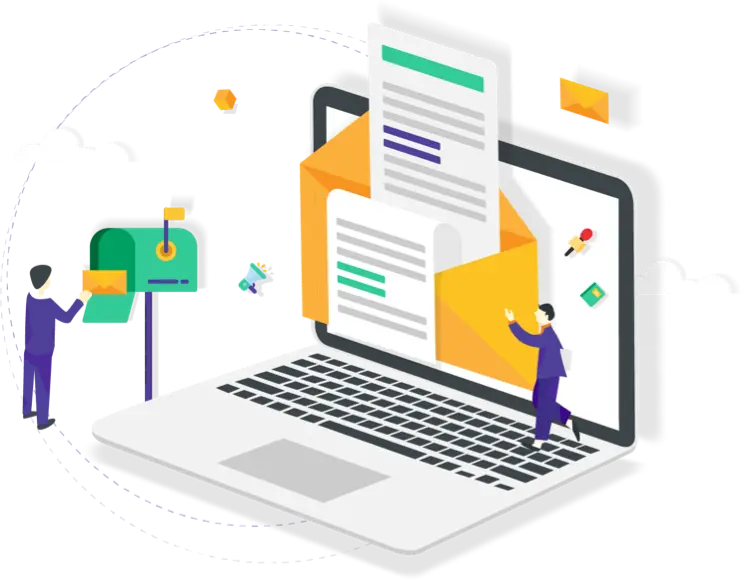
Workforce experience is a critical part of any organization’s engagement strategy. It is the differentiator, building upon acceptable workplace standards with meaningful, hard-hitting interventions that create exceptional employee experiences.
To ignore workplace experience is to miss out on several benefits which it could bring, both for employees and the organization’s bottom line. This article discusses how workforce experience fits into employee engagement, the reasons why you should focus on it, and five simple strategies you can deploy at work to improve your workforce experience.
Related articles:
5 workflows to simplify your life as an HR
The HR Workflow: Your Ultimate Solution for Efficient Workforce Management
Workforce Experience vs. Employee Engagement
A recognized way of comparing workforce experience with employee engagement is that experience is an outcome of engagement.
Often, employee engagement is viewed as one of the strategic goals of a human resources (HR) department and the wider organization. Employee engagement is measurable, with a target usually needing to be achieved. Connected to this are processes which can be implemented to work on driving this measurement, usually over the course of a year, or even longer. HR departments are closely linked with driving employee engagement goals but ultimately, engaging people at work is a team effort, requiring input from leadership in all departments.
This is where workforce experience comes in. The programs and ideas introduced by HR departments and leaders make up the employee experience. If employee engagement is the broader goal, then workforce experience comes from some – if not most – of the actionable steps to achieving it, and where smaller actions can come together to make a big difference.
Focusing on different elements of workforce experience makes organizational-wide engagement targets a lot more attainable. For example, research undertaken by IBM breaks down workforce experience into five areas: achievement, belonging, happiness, purpose and vigor.
Why You Should Care About Workforce Experience
As local, national, and global labor markets become increasingly competitive, workforce experience matters more today than ever before. Employees in general are no longer solely motivated by ‘traditional’ factors such as a stable job or a good salary. Employees want to find an organization whose core values align with their own, as well as offering an environment and a suite of benefits which is a perfect fit for who they are. Consequently, being known for a focus on workforce management can be a source of competitive advantage, as well as instrumental in driving many areas of organizational effectiveness.
Resolving Barriers to Productivity
Focusing on workforce experience provides employees with an environment which is conducive to allowing them to perform at their best. This can include providing all the resources needed for effective job performance as well as nurturing a positive work culture and a fantastic operating environment. Not only this, but if employees are happy, they are more likely to put in ‘discretionary effort’, going the extra mile in their duties. Conversely, unhappy employees, or those working in an environment with poor workforce experience, are more likely to undermine the work of good employees.
Fostering Creativity and Innovation
Workforce experience can drive creativity and innovation, mainly through allowing employees greater freedom. This freedom can manifest itself through flexible working, more autonomy, participation in projects, healthy workplace atmospheres and workspaces, and socialization. This will subsequently encourage behaviors from employees which can sustain creativity and innovation, such as being more alert and present at work, working more efficiently, increased motivation, and a strong feeling of strong connection to the organization.
The link between creativity and workforce experience can be regarded as cyclical. A healthy workforce experience can drive creativity, but creative employees can also adjust their own working lives to improve their experience.
Driving Employee Satisfaction
With workforce experience being so closely connected to the idea of holistic organizational satisfaction, it is a critical driver of wider employee satisfaction, especially today. Employee satisfaction can be driven by working smarter, recruiting better and paying employees a fair wage, but workforce experience brings together several other elements, such as workplace relationships and a nurturing working environment. Often, experience drivers are ones which can differentiate between an ‘OK’ workplace and a fantastic one.
How to Improve Workforce Experience
We have discussed how workforce experience isn’t just one thing. It’s a collection of different elements which come together to create powerfully positive feelings in the organization. Here are some key strategies that you can use to drive workforce experience.
Treat your employees as customers
Adopting a ‘customer-focused’ mindset is critical to driving workforce experience. Several companies, such as Costco, Southwest Airlines and Starbucks, are known to do this, with powerful results. These companies empower employees to deliver great experiences to customers. Several companies have missions which intrinsically connect the customer experience to the workforce experience: that if they treat their employees well, the employees will look after customers, who will then return. Listening to employees and utilizing engagement surveys – in the same way companies use customer satisfaction surveys – will also facilitate a culture of sustaining positive workforce experiences.
Provide collaboration tools
A critical part of providing a great workforce experience is through bringing together various elements of the workforce; not just employees, but also gig workers, contractors, suppliers, leaders, and even CEOs or other C-suite executives. Getting collaboration tools right will go a long way to building these relationships.
Examples of collaboration tools could be cloud-based file sharing programs, messaging apps, video conferencing, or project management services. Collaboration tools can also include workplace design, such as open plan offices and flexible meeting spaces.
Encourage cross-functional teamwork
Cross-functional teamwork involves the creation of teams who have differences in experience, qualifications or work in different departments and occupations. The benefits of cross-functional teamwork extend into workforce experience because such teams drive powerful feelings of connection and belonging. Employees might feel more empowered in their roles because they have a greater understanding of what other people do.
Cross-functional teams also keep work interesting and can contribute to learning and development. Perhaps most critical to workforce experience, those who are part of cross functional teams might build lasting friendships and gel together closer than teams who only function within their own silo.
Collect feedback from employees
In the same way that companies often collect feedback from their customers, collecting employee feedback by leveraging avenues such as employee engagement survey tools tells us many things about how they are feeling and the recommendations they have for the organization. Similarly, Windows lockdown mode provides a secure and streamlined way to collect feedback from employees or customers by dedicating a device to survey responses.
Listening – and acting upon – employee feedback ensures that workplaces can be designed or improved with their thoughts and feelings in mind. It’s worth noting that it will be impossible to please everyone all the time, so carefully analyzing employee feedback and prioritizing the most common suggestions is often the best approach.
Provide training and development opportunities
Education and training in the workplace were one of the most popular employee perks of 2020, but only 29% of employers offer clear learning and development pathways.
Employees love to learn. A critical human truth is that we dream of fulfilling our potential, and an organization which enables employees to do this will provide a positive workforce experience.
When providing learning and development opportunities, HR leaders should make them inclusive and accessible. This includes ensuring that there is a mix of learning methods which consider individual learning styles (for example, e-learning, classroom training, or gamification) and pathways for all levels of the organization, from line staff to executives. Every employee should also have their own coaching pathway or personal development plan, which is worked on collaboratively between them and their manager.
Learn more about the top trends in training and development today.
Conclusion
Workforce experience is an essential component of any organization’s employee engagement strategy. Workforce experience is what will help business leaders achieve engagement goals as it creates tangible, positive touchpoints which will enable employees to thrive. As such, when coupled with other engagement drivers such as pay and reward, focusing and driving workforce experience will create culturally powerful and productive workplaces which are laser-focused on one of your most important assets: your employees.



-640x380.jpg)
